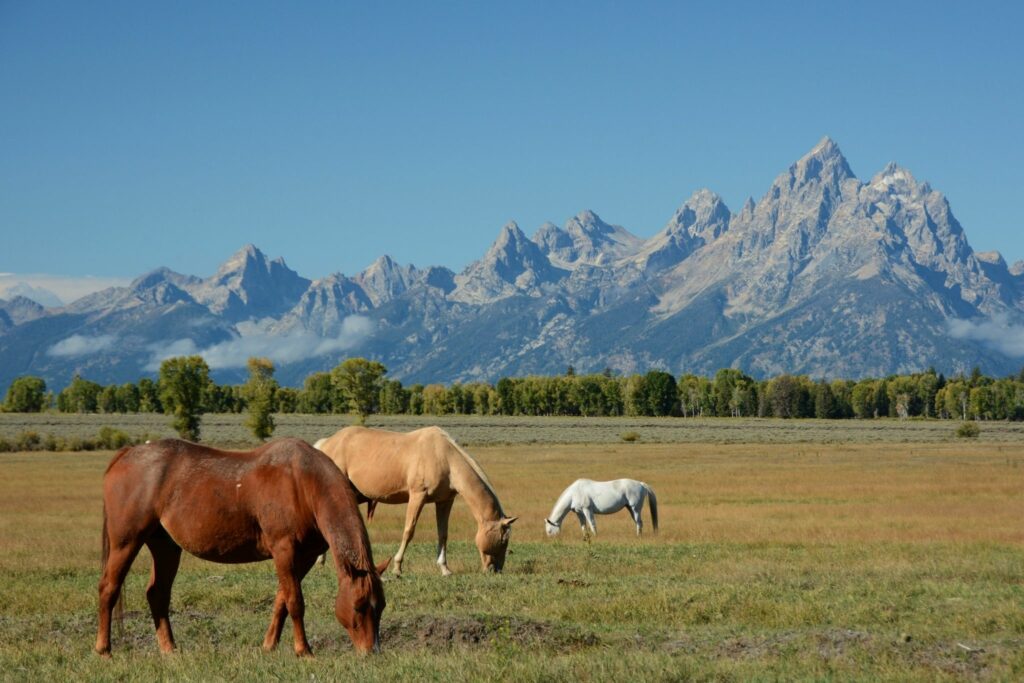Pregnant Horse FAQs
Foaling season at our house is referred to as the “real” Christmas season. It’s the time of year when we get to witness the miracle of life, and it is nothing short of magical!
We have a front row seat to our mare’s baby adventure and get to watch her growing belly. Exciting? Definitely. Overwhelming? It can be. This article discusses some of the most frequently asked questions regarding equine pregnancy. We will outline what to expect from a mare in foal, and correct a few common misconceptions.
The Gestation Period
The equine gestation period averages 340 days, however a mare can foal as early as 315 days or as late as 380 days. Veterinarians typically use the average as the designated ‘due date.’ If a mare is due in the winter months, she will sometimes carry a little longer than during hotter summer months.
How do equine heat cycles work?
Female horses have heat cycles that determine when she is ready to breed. A mare’s cycling period is determined by the sun (or artificial lighting). Some mares cycle all year long, however, most mares cycle from early spring until fall, coming in heat approximately every 19 to 22 days. The most accurate way to tell nowadays is with an ultrasound machine.
The day a mare ovulates is considered day 1 of the pregnancy journey.
When does a mare start to show?
Generally, mares will start to show around seven months.
Can horses have twins?
While it is possible for a mare to have twins, it should be avoided if at all possible. Unlike other livestock species, horses are not physically made to carry more than one baby at a time.
For that reason, when a mare is pregnancy checked (by ultrasound), the vet will also look to make sure there are no twins. If, in some instance, a mare carries twins to term, one colt is always bigger and stronger than its sibling. Sometimes they both live—I have seen two sets! More often than not, the weaker foal doesn’t survive.
Exercise Requirements & Restrictions
A healthy mare with a normal (not high risk) pregnancy can exercise as normal from the second month until about the eighth month of her pregnancy. The first month is fairly critical, but once risk of abortion has passed, she can work as normal.
The foal does the majority of growing during the last three months of gestation, so wind down exercise for this period.
Regardless, some exercise is helpful and preferred, as it can help prevent edema (swelling) in the lower leg and helps maintain muscle mass and overall strength.

Can you ride a pregnant mare? If yes, how long?
Generally speaking, you can ride a pregnant mare from month two of her pregnancy until month eight. This may change based on the specific mare and pregnancy, so always ask your vet if you are not sure!
What are some instances that would limit physical activity for a pregnant mare?
It goes without saying that a lameness issue would limit activity. For pregnant mares, I tend to go with each individual mare’s pre-pregnancy fitness level. Once the mare is safely in foal (past 30 days), they can and should resume normal activities unless they show discomfort.
Pregnant Mare Care
Pregnant mares don’t need to be pampered–in fact, maintaining as much normalcy as possible is beneficial. Turnout is especially good for a mama-to-be as it allows her access to exercise, fresh air, and social interaction with other horses.
Horses are herd animals, so maintaining interaction with (compatible!) stablemates is good for her mental health.
What do you feed a pregnant mare?
Feeding a pregnant mare shouldn’t be rocket science. While there are a number of specialized feeds available, changing up your grain isn’t necessary for every pregnancy.
Generally speaking, I feed my mares the same as their pre-pregnancy standards until they start showing at around 7 months, when I’ll increase slightly.
The critical stage is about 1 month before foaling. That’s where the foal puts on the most weight in-utero, so I feed those mamas-to-be double their original ration.
Always read your feed tags for individual instructions, and don’t hesitate to ask your vet or equine nutritionist with specific questions!

Is there anything you should avoid feeding a pregnant mare?
A general rule of thumb is to take pregnant mares off of fescue grass at least 3 months before foaling. I make a point of avoiding fescue all the time. Fescue can have serious, life-altering side effects for pregnant mares and their unborn foals.
The main risk is the foal developing a thickened placenta, which makes it impossible for the foal to tear in order to take its first breath.
I have personally found perfectly healthy newborn colts lifeless in an intact placenta. On the other hand, I have also gotten there in the nick of time to rip open the membrane and witness a miracle. Bottom line is: avoid fescue if you can.
When should you vaccinate a pregnant mare? Which vaccines should you give?
Always consult your vet for regional vaccination recommendations. To give you a general idea, this is the vaccine program for our mares in Kansas.
A pregnant mare should get a Rhino vaccine at 5, 7, and 9 months of gestation. Also known as the ‘Pneumabort-K’ vaccine, it reduces the risk of abortion. The normal set of annual shots should be given around 1 month before a mare’s due date. These include: Eastern/Western Encephalitis, Tetanus, Flu, and West Nile.
Can you trailer a pregnant mare?
Yes, pregnant mares can be hauled. I like to monitor their water intake to prevent dehydration. That said, avoid hauling during the last few weeks of gestation.

Prepping for Delivery
What signs does a mare show when she is close to giving birth?
Mares are masters at fooling us; sometimes I think they are laughing at us! For some reason, it seems like they can ‘hold it in’ and pretty much choose their birthing time.
While there is no 100% accurate sign for impending delivery, I find the udder is the best indicator. When the udder is leaking colostrum, I’m pretty certain delivery is close.
What should you do to prepare for foaling?
Preparing for foaling is different for every horse owner. I’ve had mares foal outside in a mud puddle or in snow, and some in a sparkling clean stall. Keeping the newborn foal comfortable and secure is a priority.
As long as the mare foals out of the elements, above freezing (yes, they CAN freeze their little ears off), and relatively clean, the ‘where’ doesn’t matter. I make a habit to keep a bottle of chlorhexidine close to the foaling location at all times. This is to disinfect the foal’s umbilicus.
We will bed the foaling stall with plenty of straw to make it easy to clean. Straw also keeps the wet, newborn colt warm and rather clean (unlike sticky wood shavings).
It is also a good idea to clean the mare’s udder with warm water, soap and a rag. Otherwise, the layer of smegma, which is full of bacteria, will go directly in the newborn foal’s mouth. When possible, I like to braid the mare’s tail to keep it out of the way.
Also, some mares get really dirty around their vulva and rectal area, so I clean that area thoroughly as well.
Parting Thoughts
These questions barely scratch the surface of the fascinating world of equine breeding, but should help provide an overview. One thing I have come to accept over the years is that knowledge is infinite and, as Carmella Abel wrote so well: “Horsemanship is a never-ending learning process.”
Having questions and concerns is totally normal; that is why I never hesitate to call my veterinarian whenever something comes up. Truth be told, having him on speed dial during foaling season has saved several lives in our barn.
P.S. Enjoy this article? Trot on over to:
- Horse care 101: Turnout blankets vs. stable blankets
- Horse Riding Equipment List: What You Need & What You Don’t
- Beginner’s Guide to Horse Hay Nets & Bags
- Horse Riding Gear for Beginners (Quick Print Equipment List)
- The Ultimate Packing & Horse Trailering Checklist
- What Gear Do You Need to Ride Horses as an Adult
- 99 Fun & Incredible Horse Facts for Kids
Sources
https://equinehelper.com/basic-horse-knowledge/
https://www.hagyard.com/what-to-expect-when-your-mare-is-expecting-a-normal-foaling
https://www.veterinarypracticenews.com/4-important-healthy-start-goals-foals/








